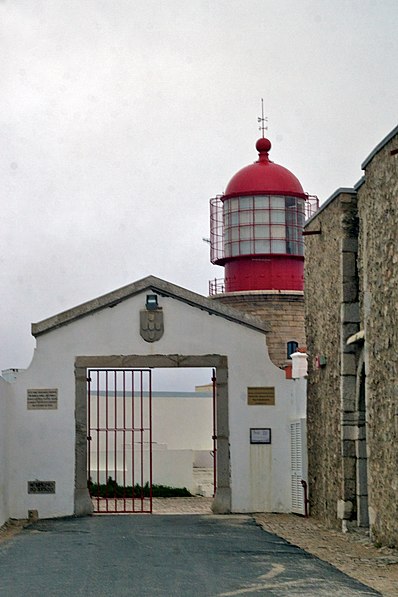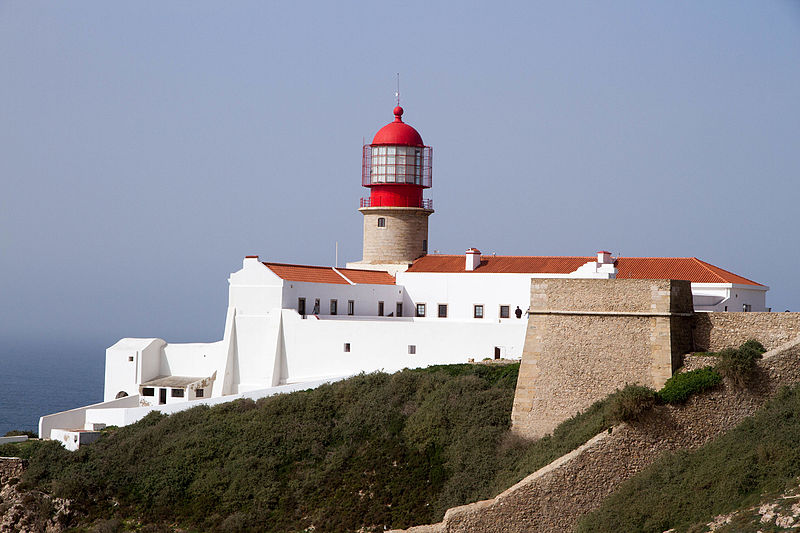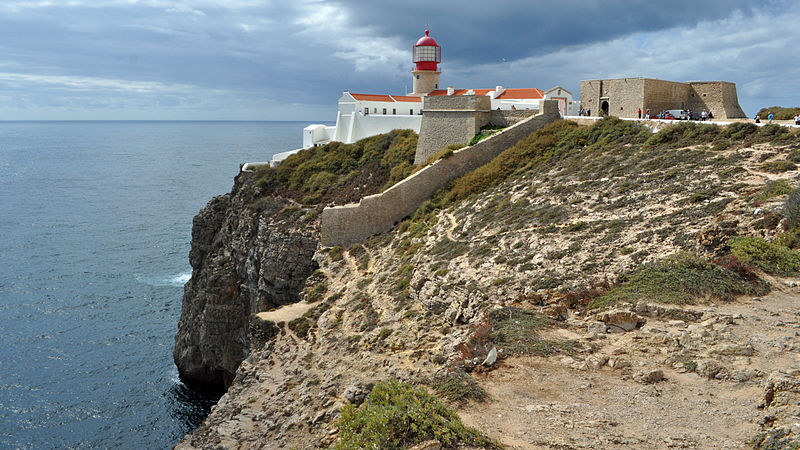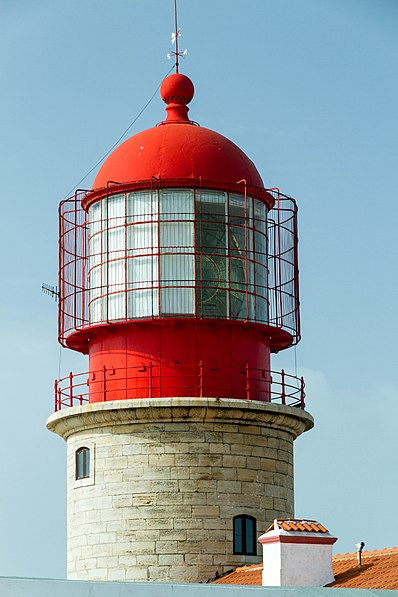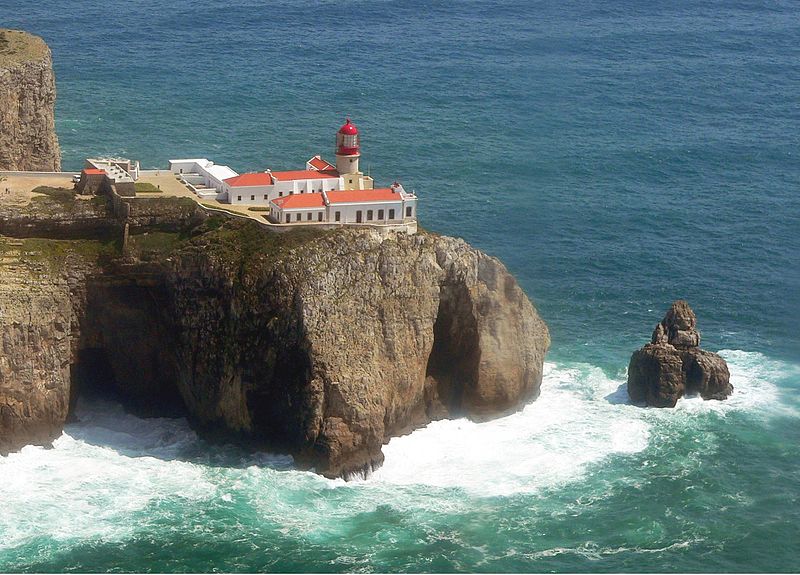Lighthouse of Cabo de São Vicente
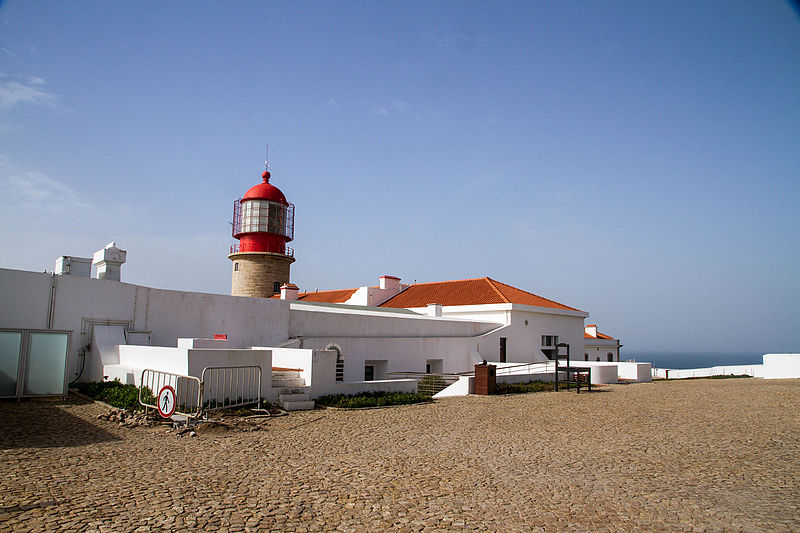
Facts and practical information
The Lighthouse of Cabo de São Vicente, situated on Portugal's southwestern tip, stands as a sentinel over one of Europe's most dramatic coastlines. This iconic lighthouse, perched on rugged cliffs that plummet into the Atlantic Ocean, has been guiding seafarers since its construction in 1846.
Often shrouded in mist and battered by fierce winds, the lighthouse is a testament to the enduring spirit of maritime navigation. Its powerful beacon, one of the brightest in Europe, can be seen from as far as 60 kilometers away, serving as a vital navigational aid for ships passing through the treacherous waters off the Iberian Peninsula.
Not only is the Lighthouse of Cabo de São Vicente an operational facility; it is also a symbol of the Age of Discoveries, when Portuguese explorers set sail to chart unknown territories. The lighthouse marks the very edge of the known world for those intrepid mariners and is steeped in history, with the nearby cape being named after Saint Vincent, whose relics were said to be brought here for protection from the Moors.
Today, the Lighthouse of Cabo de São Vicente is a popular tourist attraction, drawing visitors who wish to experience the raw beauty of nature and the thrill of standing at Europe’s southwestern frontier. The lighthouse also features a small museum dedicated to the history of Portuguese lighthouses, providing insight into the life and work of lighthouse keepers throughout the ages.
Faro
Lighthouse of Cabo de São Vicente – popular in the area (distance from the attraction)
Nearby attractions include: Farol de Sagres, E9 European long distance path, Torre de Aspa, Igreja Matriz de Nossa Senhora da Conceição.


